Agenda setting theory ¶
| http://www.hrc.utexas.edu/exhibitions/web/woodstein/ | ||
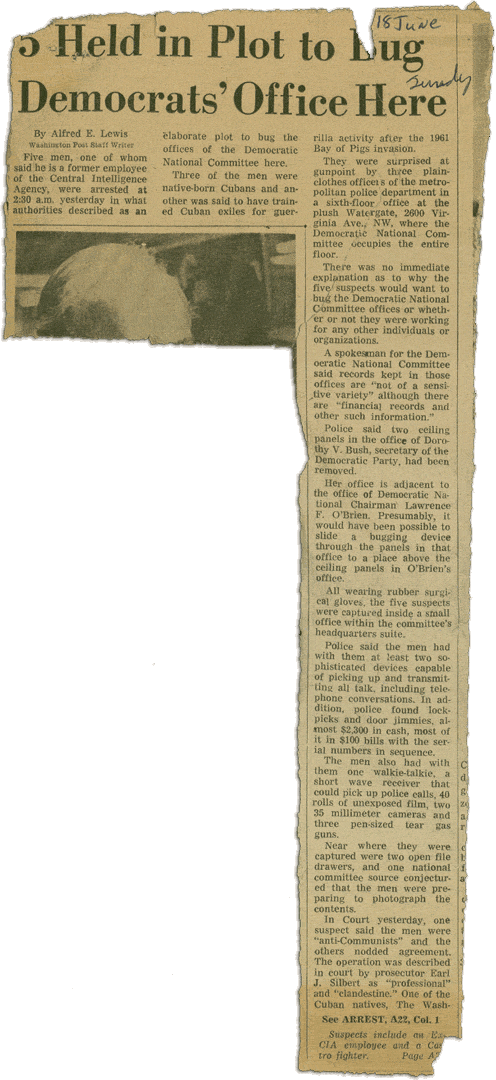 1972 The Washington Post. Reprinted with permission [GIF image (86.1 KB)] | 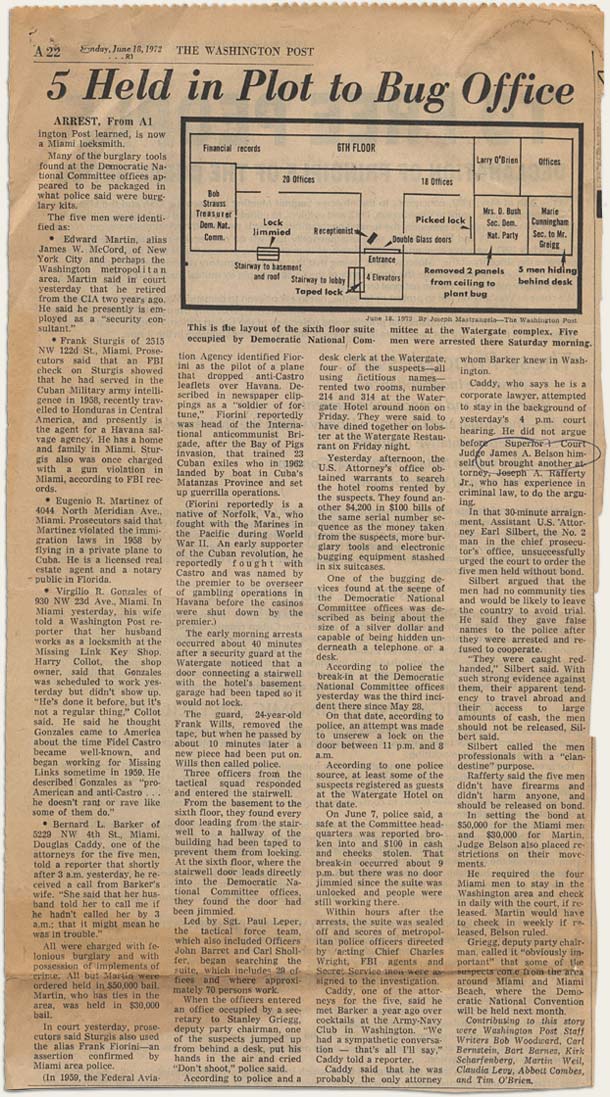 1972 The Washington Post. Reprinted with permission [JPG image (160.59 KB)] | 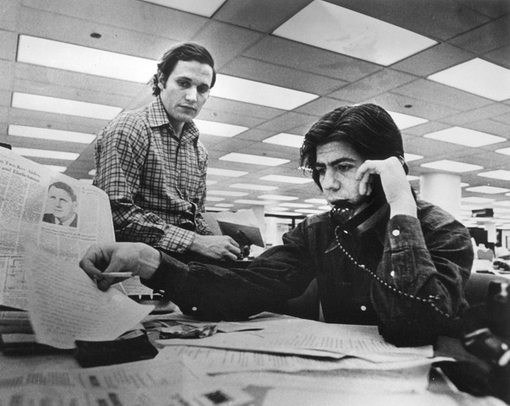 Woodward and Bernstein [PNG image (254.94 KB)] ![[http]](http://wiki.commres.org/imgs/http.png) source URL(http://www.washingtonpost.com/politics/watergate-scandal-key-players/2012/06/05/gJQAkn1jLV_gallery.html#photo=2) source URL(http://www.washingtonpost.com/politics/watergate-scandal-key-players/2012/06/05/gJQAkn1jLV_gallery.html#photo=2)Carl Bernstein and Bob Woodward: A native of Washington, D.C., Bernstein, right, got a job at The Post in 1966 covering the local courts and police. In June 1972, he teamed up with colleague Bob Woodward, pictured left, whom he knew only slightly, to investigate the arrest of five burglars at the Democratic National Committee offices in the Watergate office complex. He and Woodward won a Pulitzer Prize for their reporting in 1973 and wrote two books about the Watergate affair, "All the President’s Men" and "The Final Days." Woodward, a Yale graduate who had served in the Navy, talked his way into a job as a reporter for the Metro section of The Washington Post in 1970 before working with Bernstein on the Watergate investigation. He is now an assistant managing editor of The Post. |
Media agenda :: Public agenda
언론은 사람에게 어떻게 생각하도록 할 것인가에 대해서는 성공적이지 않을 수도 있지만, 무엇에 대해 생각할 것인가에 있어서는 매우 성공적일 것이다.
Agenda setting theory
Agenda-setting theory was introduced in 1972 by Maxwell McCombs and Donald Shaw in their ground breaking study of the role of the media in 1968 presidential campaign in Chapel Hill, North Carolina. The theory explains the correlation between the rate at which media cover a story and the extent that people think that this story is important. This correlation has been shown to occur repeatedly.
conventional idea about news media before the theory
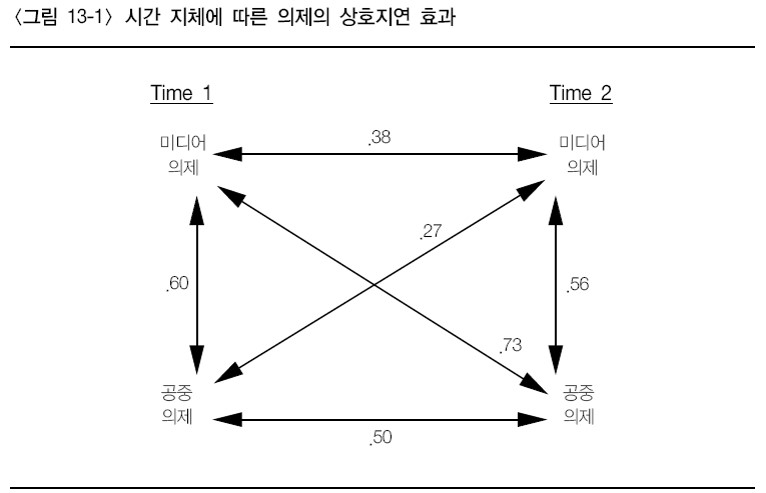
New media simply reflect the public's interests,
covering issues about which audience members already know, believe, or want to understand in detail.
In other words, news media = mirrors of public interests.
The theory arguescovering issues about which audience members already know, believe, or want to understand in detail.
In other words, news media = mirrors of public interests.
Public opinion is shaped by media coverage (particularly in the area of political news)
So, The media does not reflect the public interests. Rather, the public reflects what is presented by the news media.
AssumptionsSo, The media does not reflect the public interests. Rather, the public reflects what is presented by the news media.
- News media have an agenda. They tell audiences what kind of news is important.
Media provide "not what to think . . . but what to think about" (Cohen, 1963, p.13).
- People rely on some help to understand and evaluate politics and political viewpoints. In other words, audience members rely on new media to what to look for and how to take it.
There is a clear association between what the new media present to audiences and what the audiences preceive the issues reported (Chaplehill study).
It is a problem of the order of effects:
- 9 New media (Political news coverage of print and broadcast media)
- Two newspapers at Raleigh
- Two newspapaers at Durham
- Time, Newsweek
- New York Times (national version)
- CBS, NBC
- Two newspapers at Raleigh
- positions and length
- NP: front page, special columns, and opinion page
- mag: first page of news section, political news story page, etc.
- TV: first three story, storyies over 45 seconds
- NP: front page, special columns, and opinion page
- 외교, 법과질서, 재정, 공공복지, 시민의권리 (사안에 대한 우선순위)
- 공중의제(public agenda)의 측정
It is a problem of the order of effects:
- public's interests and idea --> the media coverage OR
- the media coverage --> public's interests and idea

[JPG image (34.57 KB)]
Iyengar, Peters, and Kinder (1982) managed to find supporting evidences showing the causal relationship, and established the argument of News framing.
Issues known to be effective to people's thought
News media work as gatekeepers -- the handful of news editors select, emphasize, elaborate, and even exclude news stories or parts of news stories to create a certain effect for the audience. According to Griffin (2003), about 75% of stories that come across a news desk are never printed or broadcast" (p. 394).
| Process | Example in Action |
| Selection | During the spring of 2003, a news classified disease known only as severe acute respiratory syndrome (SARS), erupted in parts of eastern Asia and southeastern Canada and major part of the US. Hence, news editors decided to use the strange disease. |
| Emphasis | Nearly all of the SARS stories emphasized the increasing number of those diagnosed with the illness, the number of lives lost because of SARS, and cities thought to be most affected by the illness; thus, these news depictions stressed the disease's danger. |
| Elaboration | During the spring of 2003, US troops were in Iraq after a brief invasion that overthrew Saddam Hussein. Although the war story was important, by May 2003, SARS coverage had eclipsed much of the military news. |
| Exclusion | Nearly no new media had coverages of preventing the disease. |
- Media agenda are issues discussed in the media, such as newspapers, television, and radio.
- Public agenda are issues discussed and personally about members of the public.
- Policy agenda are issues that policy makers consider important, such as legislators.
- Corporate agenda are issues that big business and corporations consider important, including corporations. They are hiring public relations specialists.
Issues known to be effective to people's thought
- Political isssues such as stories about candidates and their campaign strategies, and
- chronic issues such as human right violations,
- chronic disease,
- teen violence
- personal tax
- personal finance
Provide the examples of News framing of your own group. Present your examples ![[http]](http://wiki.commres.org/imgs/http.png) at the group page(http://wiki.commres.kr/CommunicationTheories/2010-Spring?action=show#s-2).
at the group page(http://wiki.commres.kr/CommunicationTheories/2010-Spring?action=show#s-2).
![[http]](http://wiki.commres.org/imgs/http.png) at the group page(http://wiki.commres.kr/CommunicationTheories/2010-Spring?action=show#s-2).
at the group page(http://wiki.commres.kr/CommunicationTheories/2010-Spring?action=show#s-2). 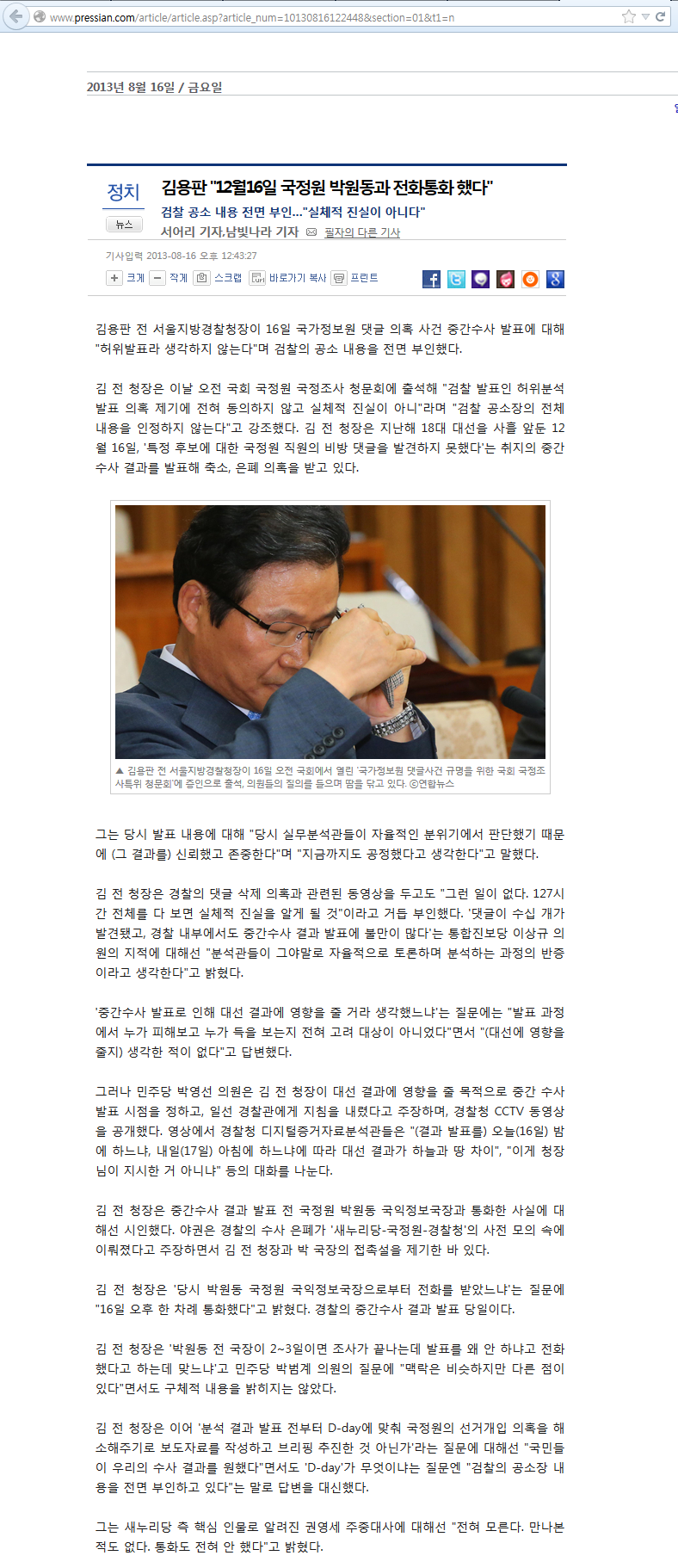
프레시안 [PNG image (445.18 KB)]
![[http]](http://wiki.commres.org/imgs/http.png) 기사 URL(http://www.pressian.com/article/article.asp?article_num=10130816122448§ion=01&t1=n)
기사 URL(http://www.pressian.com/article/article.asp?article_num=10130816122448§ion=01&t1=n) 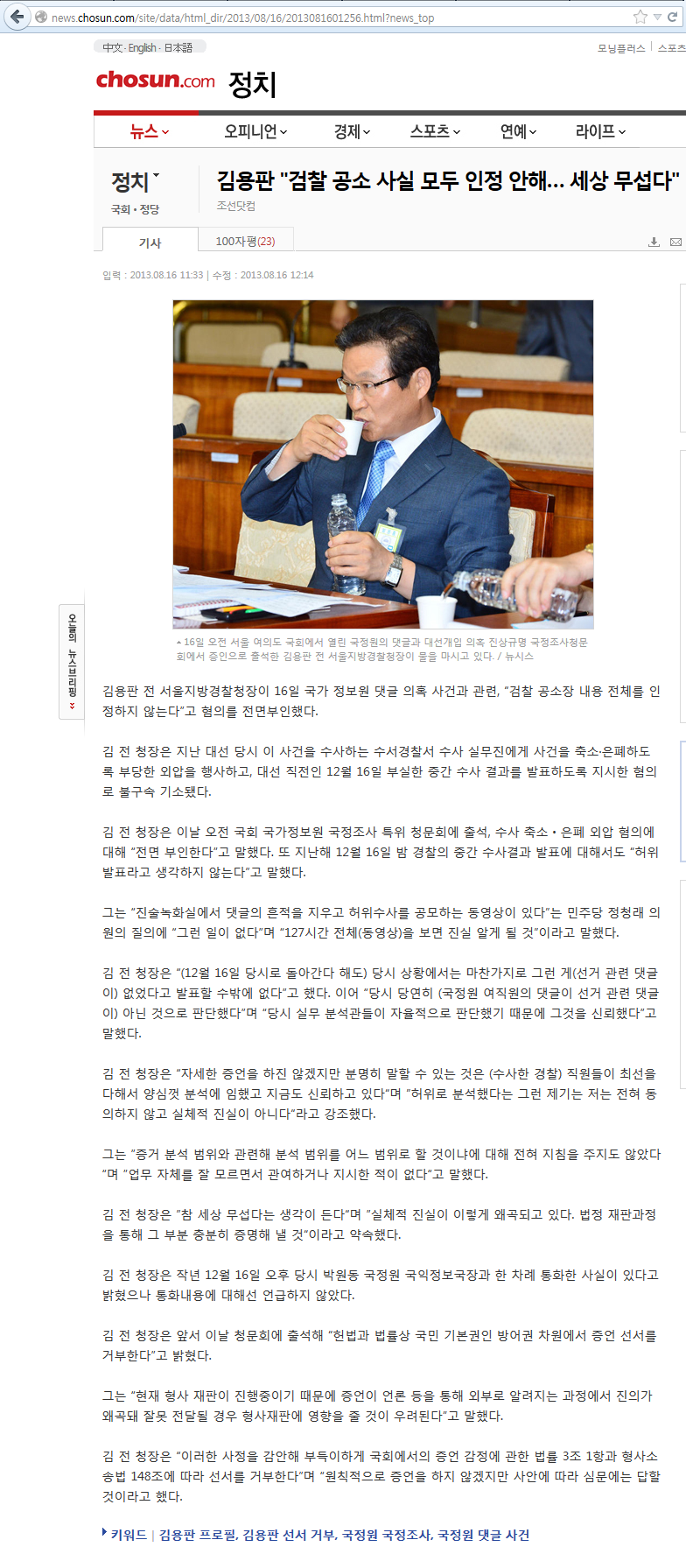
조선일보 [PNG image (550.1 KB)]
![[http]](http://wiki.commres.org/imgs/http.png) 기사 URL(http://news.chosun.com/site/data/html_dir/2013/08/16/2013081601256.html?news_top)
기사 URL(http://news.chosun.com/site/data/html_dir/2013/08/16/2013081601256.html?news_top) 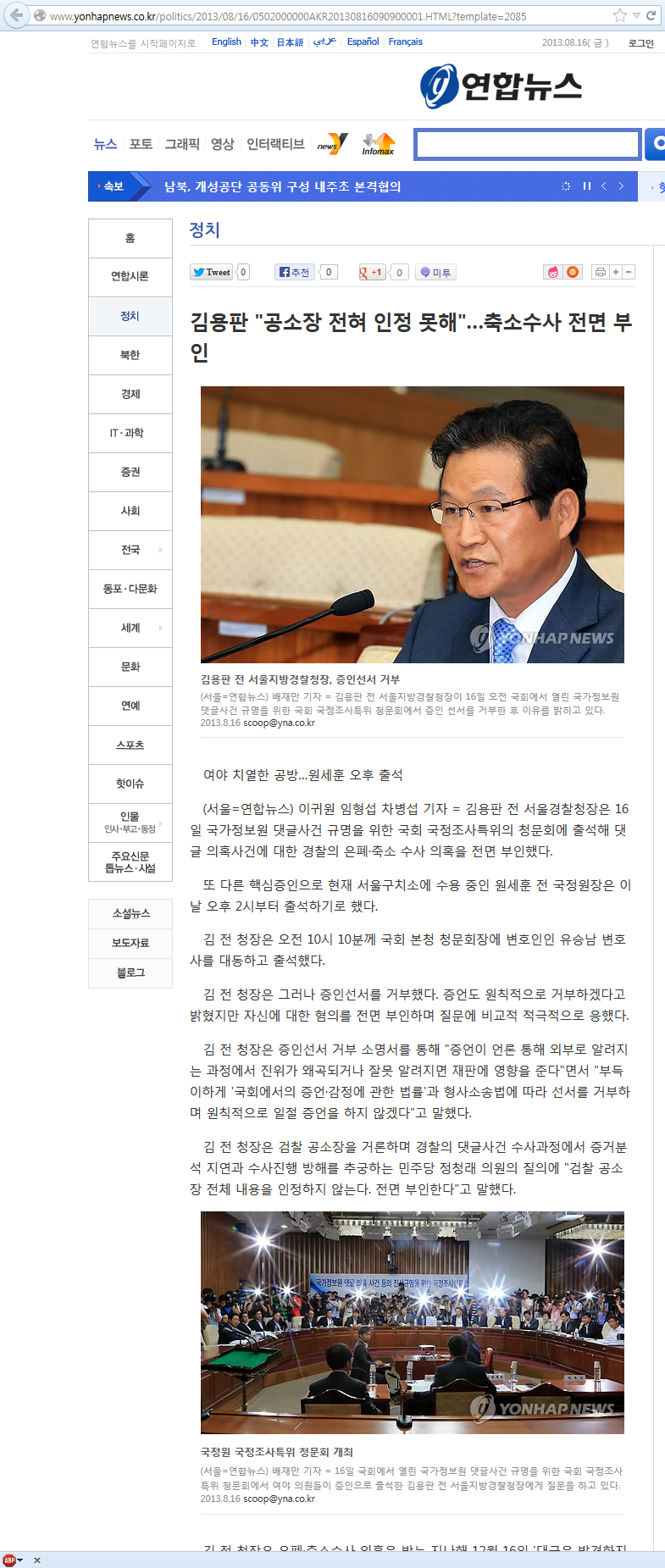
연합뉴스 [PNG image (694.8 KB)]
![[http]](http://wiki.commres.org/imgs/http.png) URL(http://www.yonhapnews.co.kr/politics/2013/08/16/0502000000AKR20130816090900001.HTML?template=2085)
URL(http://www.yonhapnews.co.kr/politics/2013/08/16/0502000000AKR20130816090900001.HTML?template=2085)